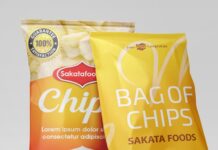We recently had the opportunity to speak with Sakata India’s managing director VK Seth, about the Indian economy and its printing and packaging industry. Sakata Inx has two ink manufacturing plants in the country – in Bhiwadi in Rajasthan and Panoli in Gujarat. It is present in newspaper and commercial offset printing inks and high-quality gravure flexible packaging Sakata inks.
This article focuses mainly on our discussion of the flexible packaging industry’s expansion in film manufacturing and the ongoing discussion about it adopting toluene-free inks for the health and safety of both the operators of presses and consumers of FMCG products. We (Mandeep Kaur and Naresh Khanna) started by asking Seth about the pandemic’s effects on the economy and the print and packaging industry.
VK Seth, Sakata Inx – As far as the economy, growth was already slow in 2019. Our industry growth had come down from, let’s say, 11% plus to 6 or 7%. Then in February and March 2020, things came to a standstill. As plants opened up, there was some recovery in April in May and take-up of both raw materials and print output, especially in the packaging sector because of de-stocking and other factors.
However, although many in the industry speak of the packaging industry’s relative strength and are hopeful of further recovery in the festival season, even in packaging, there is a tapering off since September. Even in the second half of October, we at Sakata Inx are not clear if there will be some pick up in what is traditionally an ‘up season.’
As far as the overall economic recovery, we see a severe hit in employment in industries such as hotels, aviation, real estate, and others. However, in the first quarter of 2021, we expect packaging to come back to 6 or 7% in volumes. The point is that before demonetization, we were growing by 11 to 12% in volumes.
MK&NK – With many film manufacturing machines on order, what is your view of the apparently sizeable impending growth in film manufacturing? Sustainability seems to have taken a back seat and put on the back burner. There is an expectation of significant film tonnage coming most likely in end-2021 and 2022 onwards. Do you see this growth?
VK Seth, Sakata Inx – As far as inputs to flexible packaging, in the current FY 2020-21 year, we expect our packaging ink supplies to reach the level of FY 2018-19. In the next financial year, we hope for a 6% to 7% growth, which is quite nominal in an economy like ours.
Our information is that most of the printing and converting equipment ordered earlier are coming, and some delayed. In the pandemic, the sizeable, flexible packaging converters did well to keep the supply chains going. Now the smaller converters are coming back into production, and it is a competitive situation.
Even the smaller flexible packaging converters are able to produce materials for the big brand FMCG owners. The overall market is quite competitive, and it not as if the bigger converters are running at full capacity. However, one can expect printing and converting equipment to keep adding capacity in the normal course of investment.
As far as the large film projects, my view is that these are generally planned well in advance since the investments are non-trivial and the machine deliveries also take considerable time. Government subsidies or tax advantages may influence some investments, but in the main, both the domestic economy and exports have been hit. For instance, in Africa, importers have had their revenues hit severely, and they do not have the cash or access to funds for imports. By and large, the Indian government export subsidies or bank support have also dried up.
Sakata India – The industry has to gear up
MK&NK – Do you believe toluene-free inks is just talk or waiting for the government mandate?
VK Seth, Sakata Inx – We believe that using toluene-free inks will be a game-changer for the packaging industry. While the big converters are already taking trials, getting ready, and preparing themselves, it’s not just a matter of changing inks. Toluene is very print-friendly. The windows of tolerance for non-toluene products are much narrower. Toluene free inks are not just a product that can be switched on overnight.
The Indian converters also have machines capable of running at 400 and 450 meters a minute or even higher. Good automated machines like good films and good inks (such as non-toluene inks). These high-spec machines need to be run like systems in equilibrium and cannot be productive if they are not scientifically run.
MK&NK –The BIS notified the new regulation stipulating the use of non-toluene inks for food packaging on 29 June 2020 and has mentioned that toluene-free inks will be mandatory in 180 days from publication (in effect from February 2021). Although the FSSAI issued a similar order on 10 September 2020, there is still some question about when it will enforce the new rules since smaller food business operators face immediate implementation difficulties.
VK Seth, Sakata Inx – As far as the middle level or smaller converters, they are still in the talking stage and not asking for the trials needed to switch over. I think everybody is waiting for the government to come down with regulation before they commit to volume production.
Non-toluene inks are not just a product but more like a cultural change from raw material to handling and end product. Their use is a challenge not only for the raw material suppliers but also for the entire industry. The industry has to gear up.












